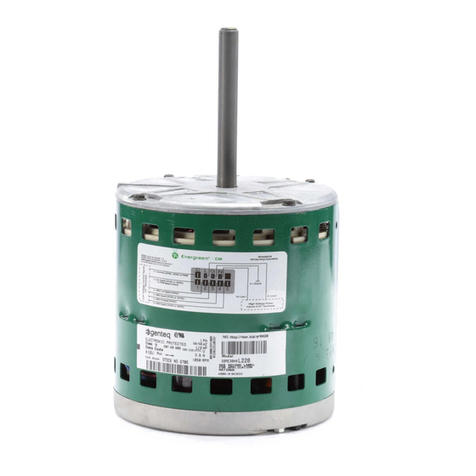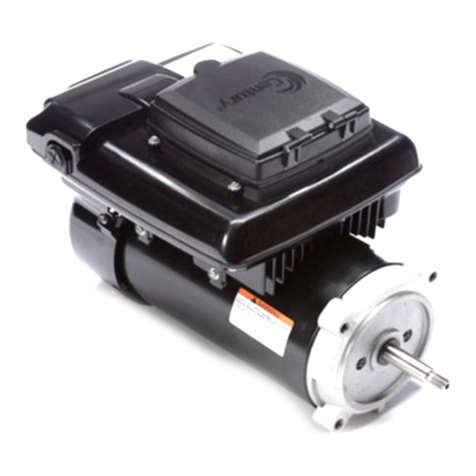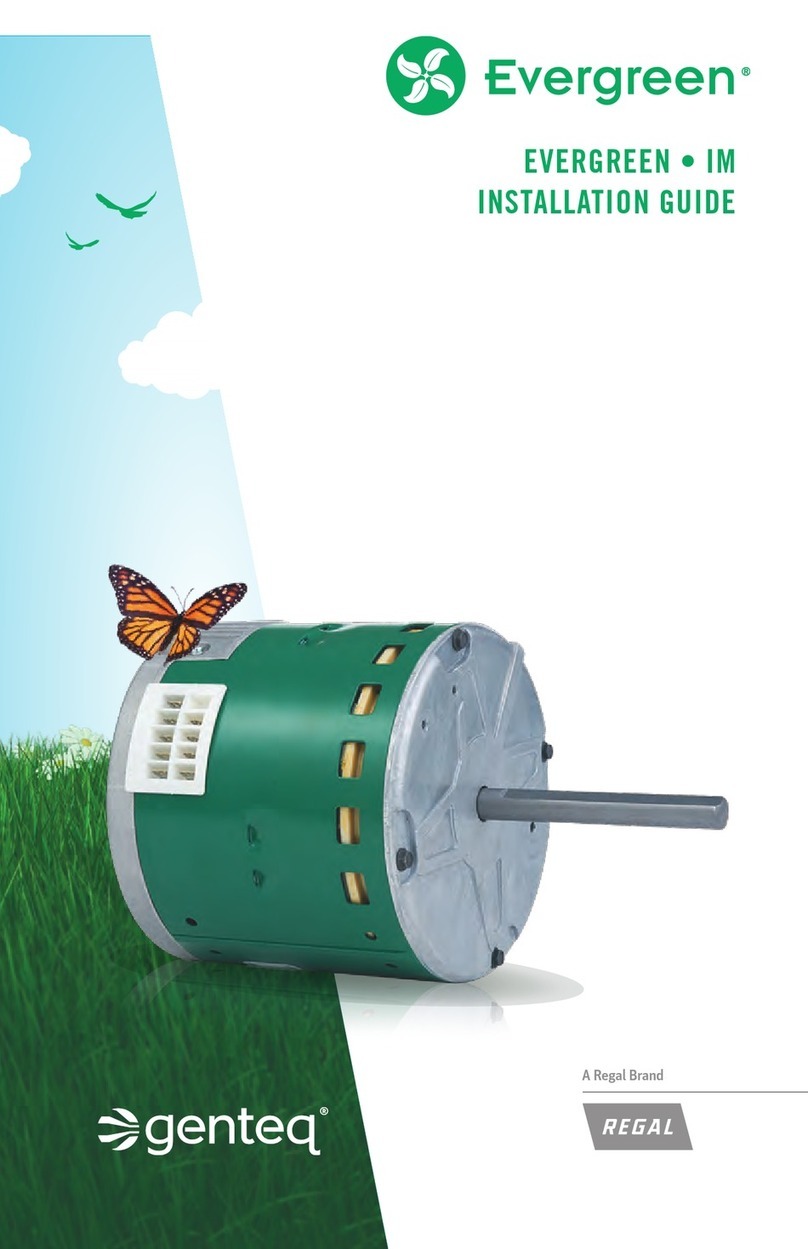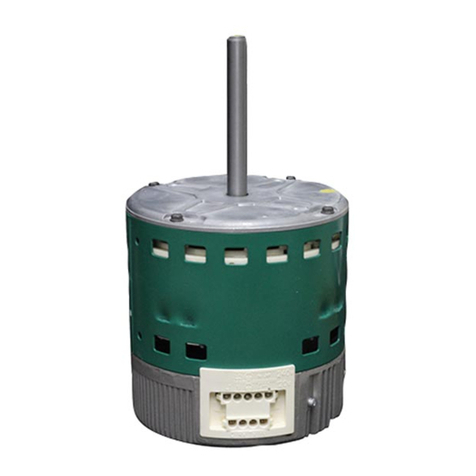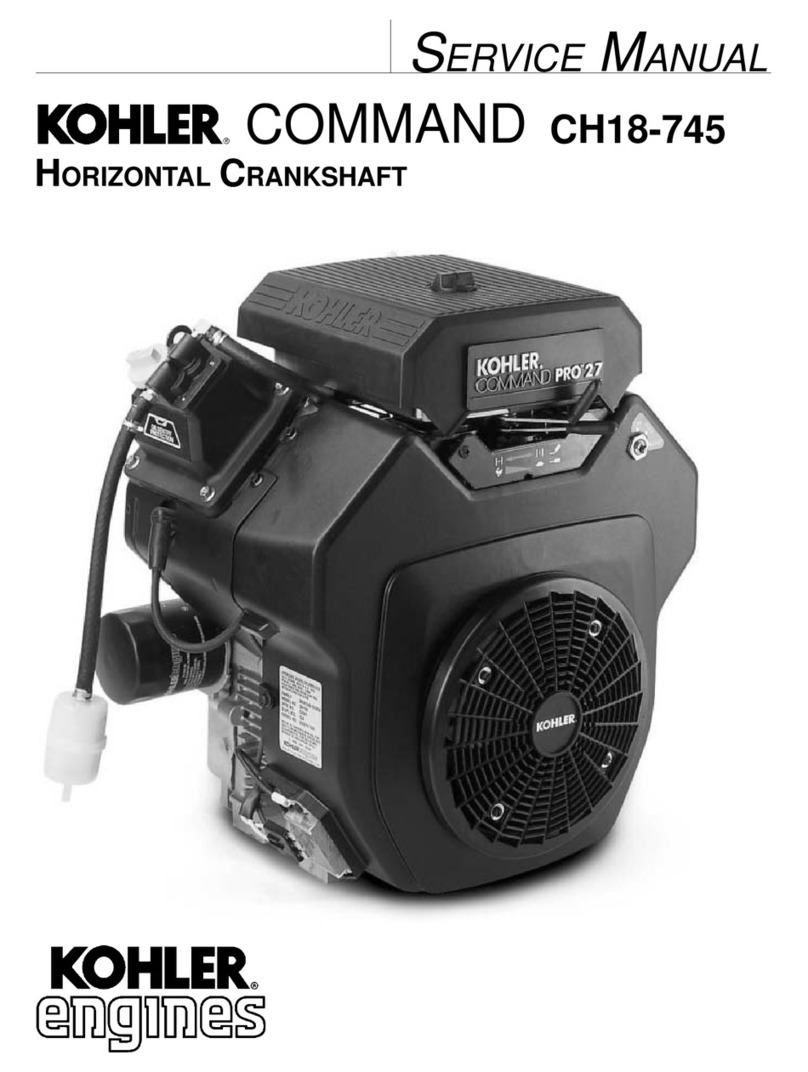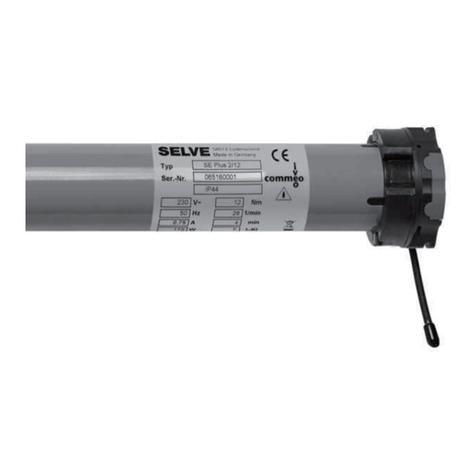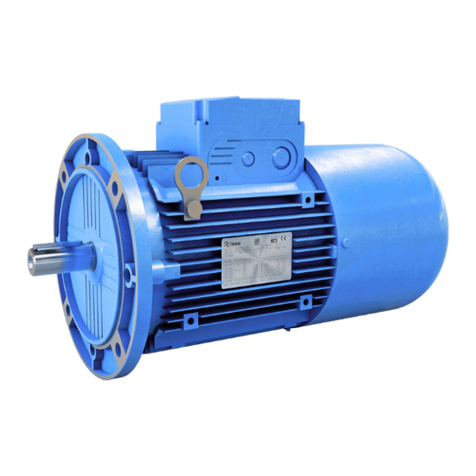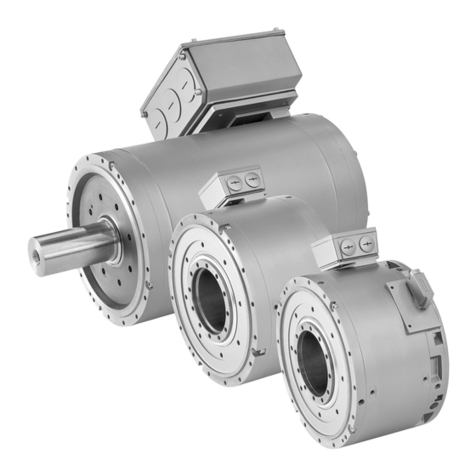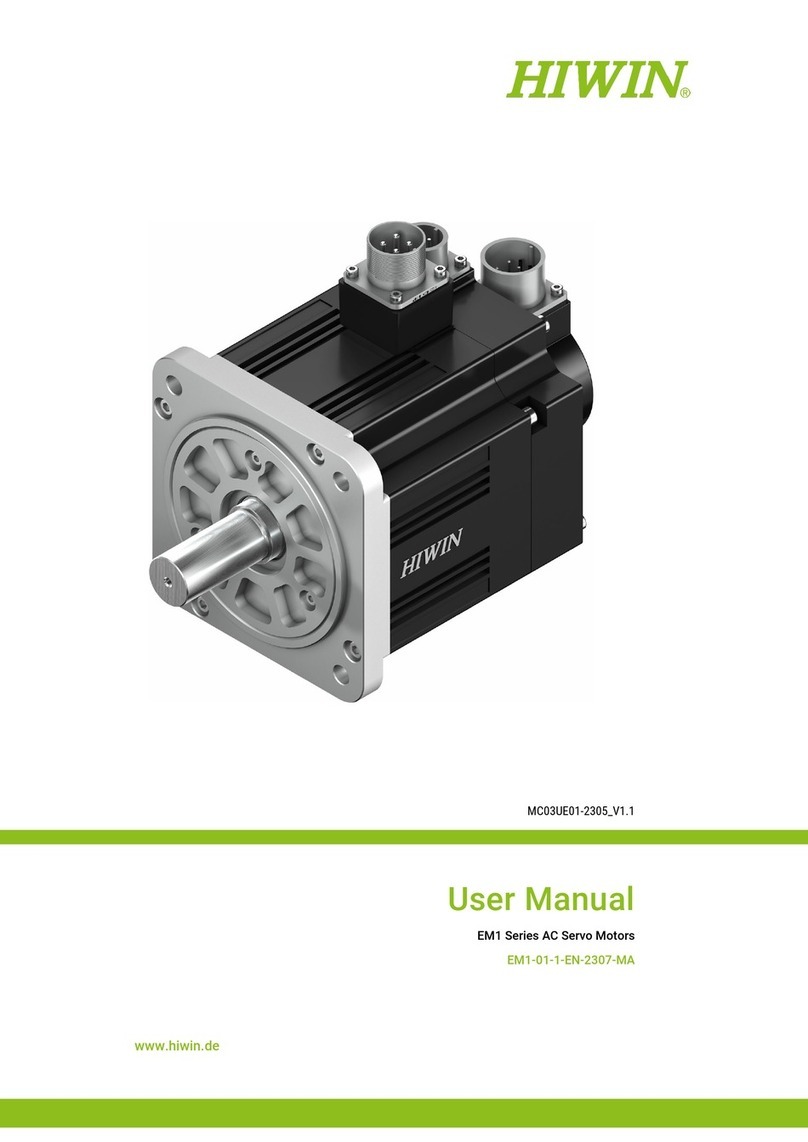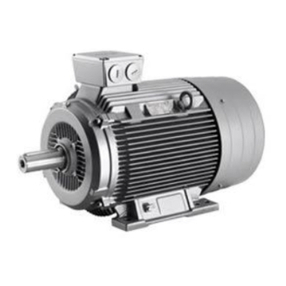
6©2020 Regal Beloit Corporation, All Rights Reserved. MCIM20001E • Form# SB0098E
9.0 INITIAL START UP
Prior to initial start-up check the following-
• Insulation resistance of motor winding to earth to be
over 1 MΩ for motors up to 600V and over 10 MΩ for
over 600V.
• Thermistors or RTDs if fitted, should be checked for
continuity with a multimeter,
• NOTICE: Ensure thermistors are wired up to the motor
protection relay as to trip the supply to the motor in the
event of an over temperature.
• Do not megger test thermal protective devices across
their terminals. Short the entire protector leads together
and apply the test voltage between the shorted leads
and earth and/or phases.
• NOTICE: Hazardous location motors supplied by a
VVVF drive must have the thermal protection devices
connected into the motor control circuit in such a manner
as to disconnect the source of supply in the event of
an over temperature thus preventing the nominated
temperature class being exceeded.
• Anti-condensation heaters if provided must be so
connected as to switch on when the motor supply is
disconnected and switch off when the motor supply
gets connected.
• Ensure that the supply voltage and frequency correspond
to the motor nameplate ratings.
• Ensure shaft turns freely before initial start.
• Measure winding resistance between supply terminals
and record in the log book.
10.0 OPERATION
• WARNING! Before running the motor make sure that the
terminal box lid is closed and secured with appropriate
clearance to live parts.
• WARNING! Make sure that appropriate earthing is done.
If an earthing ring and earth brush are provided, make
sure that the earthing ring is clean and the earth brush
makes a good contact with the earthing ring.
• WARNING! Make sure that the coupling and/or
transmission is adequately guarded for safety.
• WARNING! Make sure of no loose objects around that
may be sucked by the cooling fan on the motor.
• NOTICE: Make sure that the load applied is within the
nameplate specification.
• Check the mounting bolts and/or flanges are firmly
secured.
• Make sure that the ambient temperature is inside 40ºC
or nameplate specification.
• Avoid frequent starting of motor. Contact Regal for
recommendation on frequency and duration of starts
(please see page 4 for the contact details).
• If a VVVF drive is used on Ex nA motor, make sure that
the applied load is inside the limits specified by the
loadability curve shown on page 9.
• On Ex e motors, make sure that the starting method
employed keeps the starting current and duration within
the nameplate figures of IA/IN ratio and tE time.
• Check that the running current on no load and full load
are reasonably balanced within 10% of the average and
record the figures in the log book for future reference.
Note that the current imbalance can be higher, typically
10 times the voltage imbalance if there is an imbalance
in supply voltage.
11.0 MAINTENANCE
Reliable, trouble free operation of a motor requires regular
maintenance. Exact maintenance needs vary based on the
site conditions.To obtain reliable service from the motor, the
following maintenance schedule may be used as a guide. An
authorised service agent must carry out maintenance of
hazardous location motors PPAE, PPAN or PPAD. Clean
the surface of the motor with a damp cloth to minimise
the risk of electrostatic discharge.
A. Ensure air intake space is unobstructed.
B. On a weekly basis use an air hose to ensure all air ways
are clear and free of dust.
C. Once every month, check motor for condensation.
Replace drain plugs before starting if they are blocked
or found missing.
D. Do not wash the motor down unless it is IP66 rated.
E. On a quarterly basis-
• Check the motor terminals for tightness and proper
contact.
• If terminal lug/s are discoloured, re-terminate with
fresh lugs.
• Check operation of starting equipment, ensuring all
terminations are tight.
• Check mechanical operation of thermal overload
relays, if any.
• Check mechanical operation of thermistor relays, if fitted.
• Check operation of anti-condensation heaters, if fitted.
• Check the earthing ring and earth brush length, if fitted.
F. On a six monthly basis, in addition to the items in ‘E’
• Check winding resistance between supply terminals
and compare to original value and enter in log book.
• Check supply voltage at motor terminals and record
in log book.
• Check bearings for abnormal noise/overheating.
G. On an annual basis, in addition to the items in ‘E’ and ‘F’
• Re-grease the bearings as recommended in the
following table. Frames 71-180 use sealed bearings.
Frames 200-315 use open re-greasable bearings.
When re-greasing bearings ensure that the correct
type of grease is used. If in doubt about the existing
grease type, clean out the old grease thoroughly from
bearings and bearing housings, prior to regreasing.
• NOTICE: NEVER MIX GREASE OF DIFFERENT
TYPES. Use grease ESSO®* POLYREX EM or
equivalent unless otherwise specified.
• Completely disassemble stator, rotor apart and clean
thoroughly.
*Esso is a trademark or tradename of ExxonMobil and is not owned by, or under the control of Regal Beloit Corporation.



